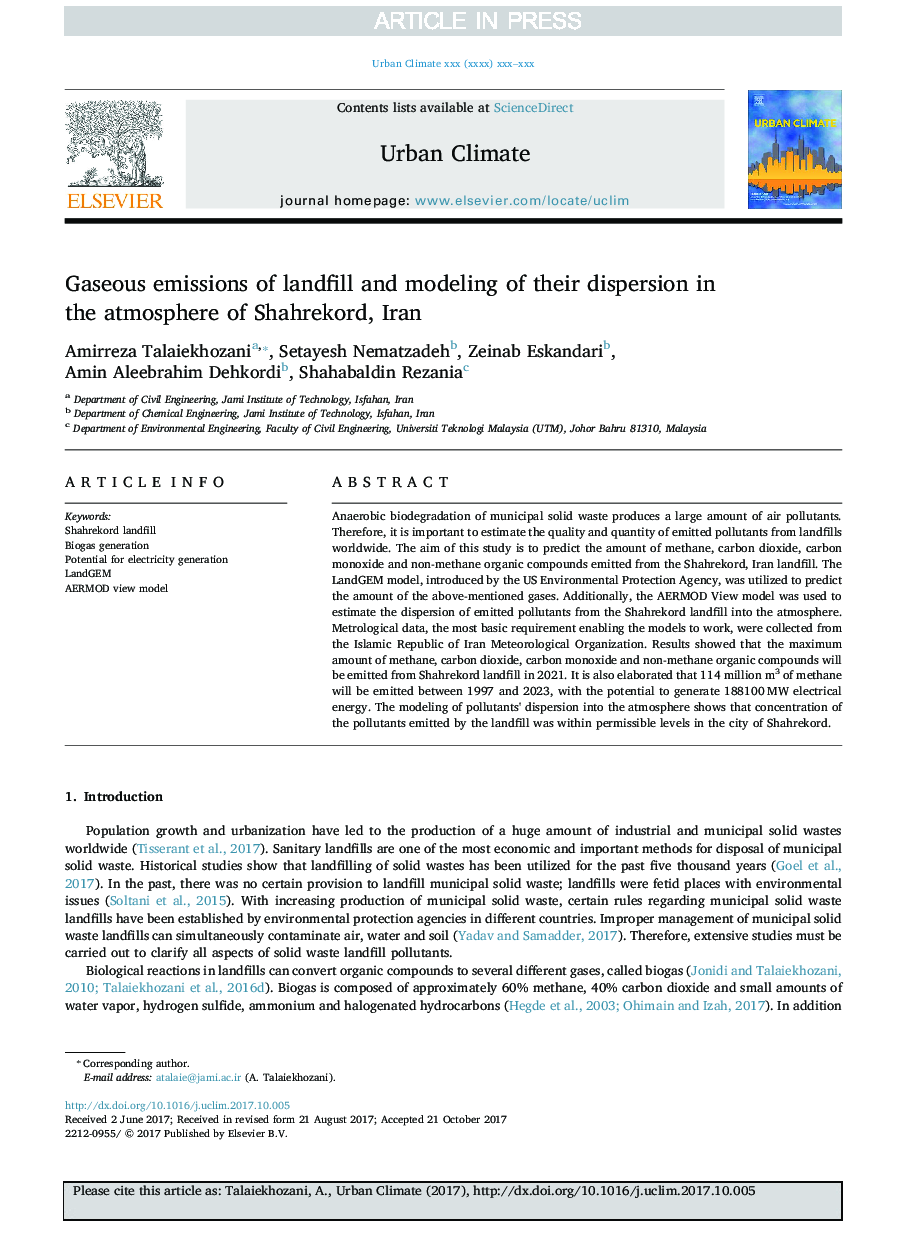| Article ID | Journal | Published Year | Pages | File Type |
|---|---|---|---|---|
| 6576926 | Urban Climate | 2018 | 11 Pages |
Abstract
Anaerobic biodegradation of municipal solid waste produces a large amount of air pollutants. Therefore, it is important to estimate the quality and quantity of emitted pollutants from landfills worldwide. The aim of this study is to predict the amount of methane, carbon dioxide, carbon monoxide and non-methane organic compounds emitted from the Shahrekord, Iran landfill. The LandGEM model, introduced by the US Environmental Protection Agency, was utilized to predict the amount of the above-mentioned gases. Additionally, the AERMOD View model was used to estimate the dispersion of emitted pollutants from the Shahrekord landfill into the atmosphere. Metrological data, the most basic requirement enabling the models to work, were collected from the Islamic Republic of Iran Meteorological Organization. Results showed that the maximum amount of methane, carbon dioxide, carbon monoxide and non-methane organic compounds will be emitted from Shahrekord landfill in 2021. It is also elaborated that 114 million m3 of methane will be emitted between 1997 and 2023, with the potential to generate 188100Â MW electrical energy. The modeling of pollutants' dispersion into the atmosphere shows that concentration of the pollutants emitted by the landfill was within permissible levels in the city of Shahrekord.
Keywords
Related Topics
Physical Sciences and Engineering
Earth and Planetary Sciences
Earth and Planetary Sciences (General)
Authors
Amirreza Talaiekhozani, Setayesh Nematzadeh, Zeinab Eskandari, Amin Aleebrahim Dehkordi, Shahabaldin Rezania,
